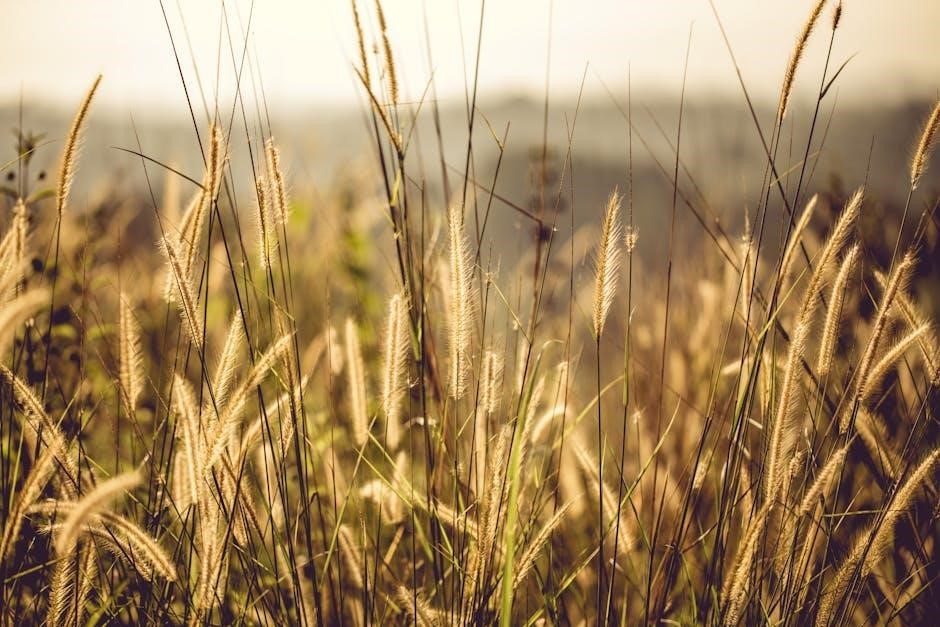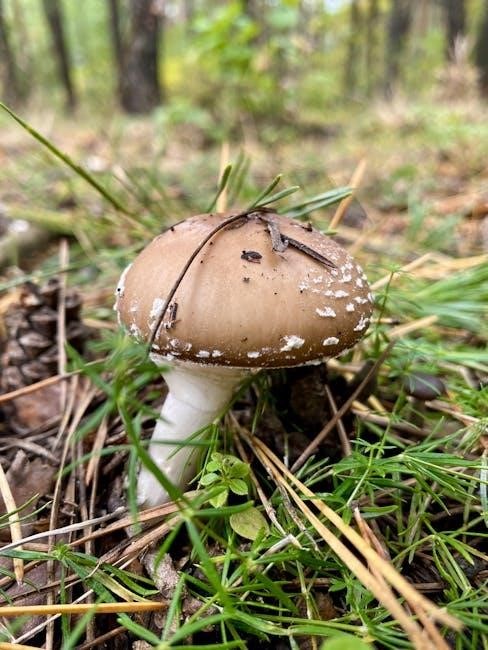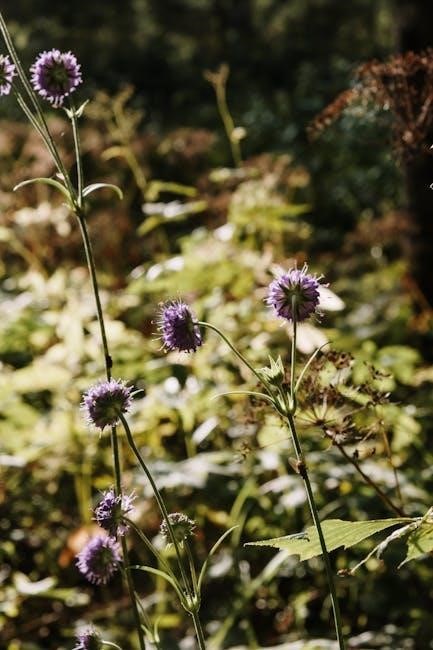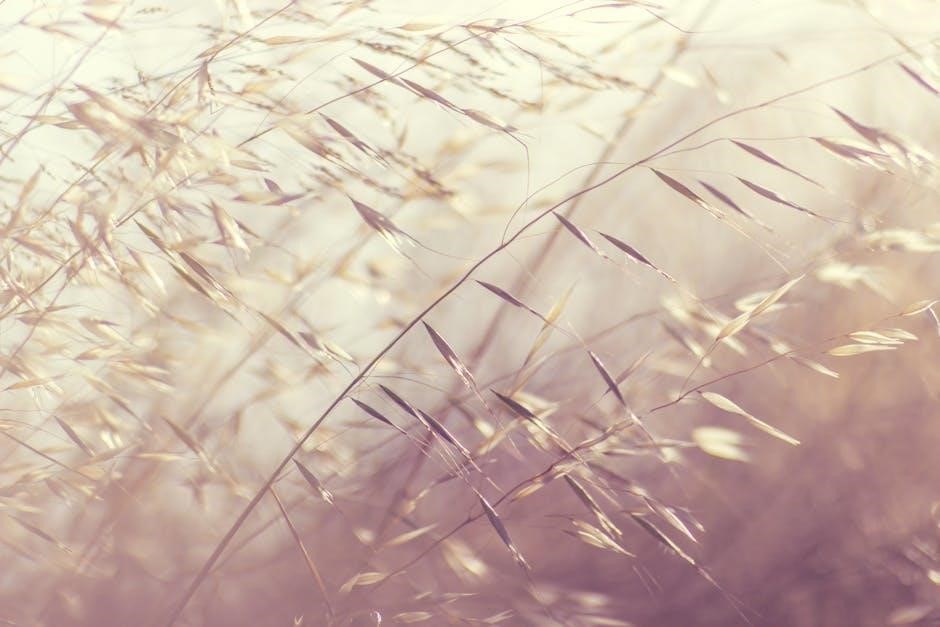Discovering edible wild plants begins with understanding nature and environmental factors influencing growth, using online resources and field guides to learn about wild edibles and their uses effectively always.
Importance of Edible Wild Plants
Edible wild plants have been a crucial part of human history, providing a source of nutrition and survival for many communities. The importance of edible wild plants lies in their ability to provide essential nutrients, vitamins, and minerals. They have been used for centuries in traditional medicine, cooking, and as a source of food. According to online resources, edible wild plants are still widely used today, with many field guides available to help identify and harvest them safely. The study of edible wild plants is essential for understanding their role in human health and the environment. By learning about edible wild plants, individuals can develop a greater appreciation for nature and the importance of conservation. Additionally, edible wild plants can provide a sustainable source of food, reducing reliance on industrial agriculture and promoting a healthier lifestyle. Overall, the importance of edible wild plants cannot be overstated, and their study is essential for a better understanding of the natural world.

Field Guides to Edible Wild Plants
Field guides provide detailed information on edible wild plants, including identification and harvesting techniques, using online resources effectively always.
Comprehensive Field Guides
Comprehensive field guides to edible wild plants are highly detailed and cover a wide range of species, including plants found in various regions and climates. These guides are often written by experts in the field of botany and wild edibles, and include information on plant identification, habitats, and uses. Some comprehensive field guides also include color photographs and illustrations to help with identification, as well as recipes and tips for preparing and cooking wild edibles. According to online resources, a comprehensive field guide should include information on at least 100 different species of edible wild plants, and should be organized in a way that makes it easy to find and identify specific plants. Overall, comprehensive field guides are an essential resource for anyone interested in foraging for wild edibles, and can provide a wealth of information and guidance for both beginners and experienced foragers. They offer a thorough understanding of edible wild plants.
Regional Field Guides
Regional field guides to edible wild plants focus on specific geographic areas, providing detailed information on the edible plants found in those regions. These guides are often more concise than comprehensive guides, but offer more specific and relevant information for foragers in a particular area. According to online resources, regional field guides can be especially useful for beginners, as they provide a more manageable and focused introduction to the edible wild plants of a specific region. Some regional field guides cover large areas, such as eastern North America, while others focus on smaller regions, such as the northeastern United States. These guides typically include information on the unique characteristics of the regional flora, as well as tips for identifying and harvesting edible wild plants in that region. By using regional field guides, foragers can gain a deeper understanding of the edible wild plants found in their local area and learn how to identify and use them safely and sustainably. They are a valuable resource for foragers.

Identification of Edible Wild Plants
Learning to identify edible wild plants requires careful observation and study of plant characteristics and features always using online resources.
Characteristics of Edible Wild Plants
Edible wild plants have distinct characteristics that set them apart from other plants, including their shape, size, color, and texture, which can be identified using a field guide or online resources.
The characteristics of edible wild plants can vary greatly, with some plants having showy flowers or distinctive leaves, while others may have a specific smell or taste.
Many edible wild plants have similar characteristics to poisonous lookalikes, making it essential to carefully study and identify the plant before consumption.
A field guide to edible wild plants can provide detailed information on the characteristics of each plant, including pictures and descriptions, to help with identification.
By studying the characteristics of edible wild plants, individuals can learn to identify and harvest them safely and effectively, using online resources and field guides as a reference.
The characteristics of edible wild plants can also vary depending on the region and climate, with some plants being more common in certain areas than others.
Overall, understanding the characteristics of edible wild plants is crucial for safe and effective foraging.
Poisonous Lookalikes
Poisonous lookalikes are plants that resemble edible wild plants but are actually toxic, and can be identified using a field guide or online resources.
These plants can be mistaken for edible wild plants, leading to accidental poisoning, so it is essential to carefully study and identify the plant before consumption.
A field guide to edible wild plants can provide detailed information on poisonous lookalikes, including pictures and descriptions, to help with identification.
Many field guides, such as A Peterson Field Guide to Edible Wild Plants, describe over 37 poisonous lookalikes, helping individuals to avoid them.
By being aware of poisonous lookalikes, individuals can learn to identify and avoid them, ensuring safe and effective foraging.
Poisonous lookalikes can vary depending on the region and climate, with some plants being more common in certain areas than others.
Understanding poisonous lookalikes is crucial for safe foraging, and a field guide can provide the necessary information to identify and avoid them, using online resources as a reference.

Harvesting and Preparation of Edible Wild Plants
Learning about harvesting and preparation methods using a field guide is essential for enjoying edible wild plants safely and effectively always every day.

Safe Harvesting Practices
Safe harvesting practices are crucial when foraging for edible wild plants, and a field guide can provide valuable information on how to do so. A good field guide will outline the best methods for identifying and harvesting plants, as well as provide tips on how to avoid contamination and pollution. For example, it may recommend avoiding plants that have been sprayed with pesticides or herbicides, and instead choosing plants that are growing in clean and pristine environments. Additionally, a field guide may provide information on the best times of year to harvest certain plants, and how to harvest them in a sustainable and responsible way. By following these guidelines, foragers can help ensure that they are harvesting edible wild plants in a safe and environmentally friendly manner. This information is essential for anyone looking to start foraging for wild edibles, and can be found in many online resources and field guides.
Cooking and Preparation Methods
Cooking and preparation methods for edible wild plants are diverse and varied, and a field guide can provide inspiration and guidance. Many field guides include recipes and cooking tips, such as how to prepare wild greens, berries, and roots. Some plants can be eaten raw, while others require cooking to make them palatable. A field guide may also provide information on how to preserve wild edibles, such as through canning, freezing, or dehydrating. This information can be useful for foragers who want to enjoy their wild harvests throughout the year. Online resources and field guides can also provide information on how to pair wild edibles with other ingredients to create delicious and nutritious meals. By exploring different cooking and preparation methods, foragers can unlock the full culinary potential of edible wild plants and enjoy a wider range of flavors and textures. This can add variety to meals and make foraging a more enjoyable experience.




About the author